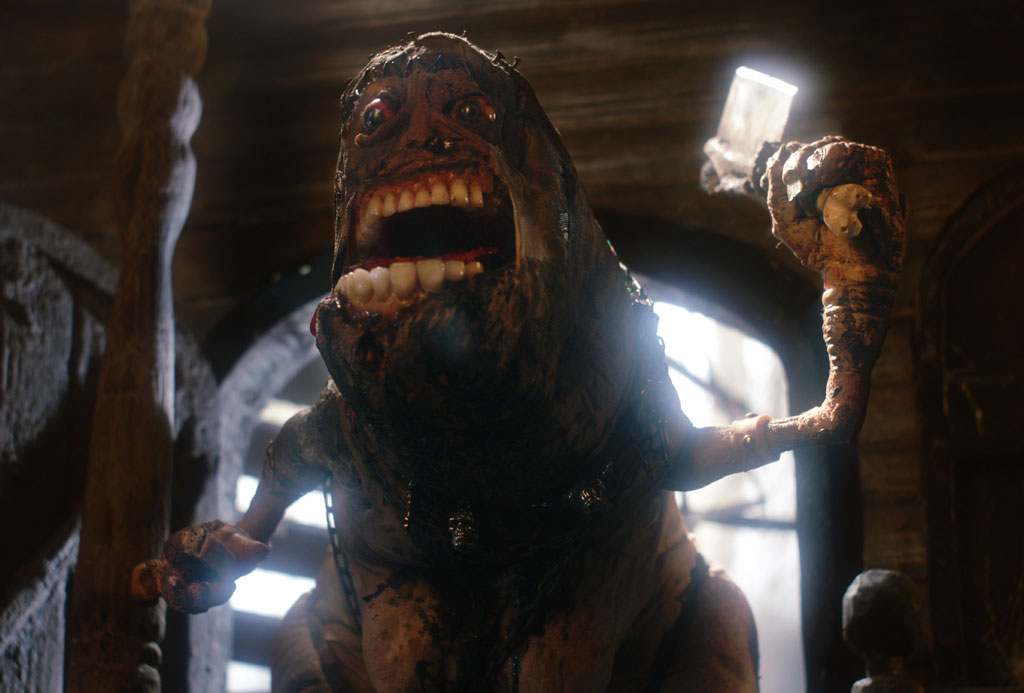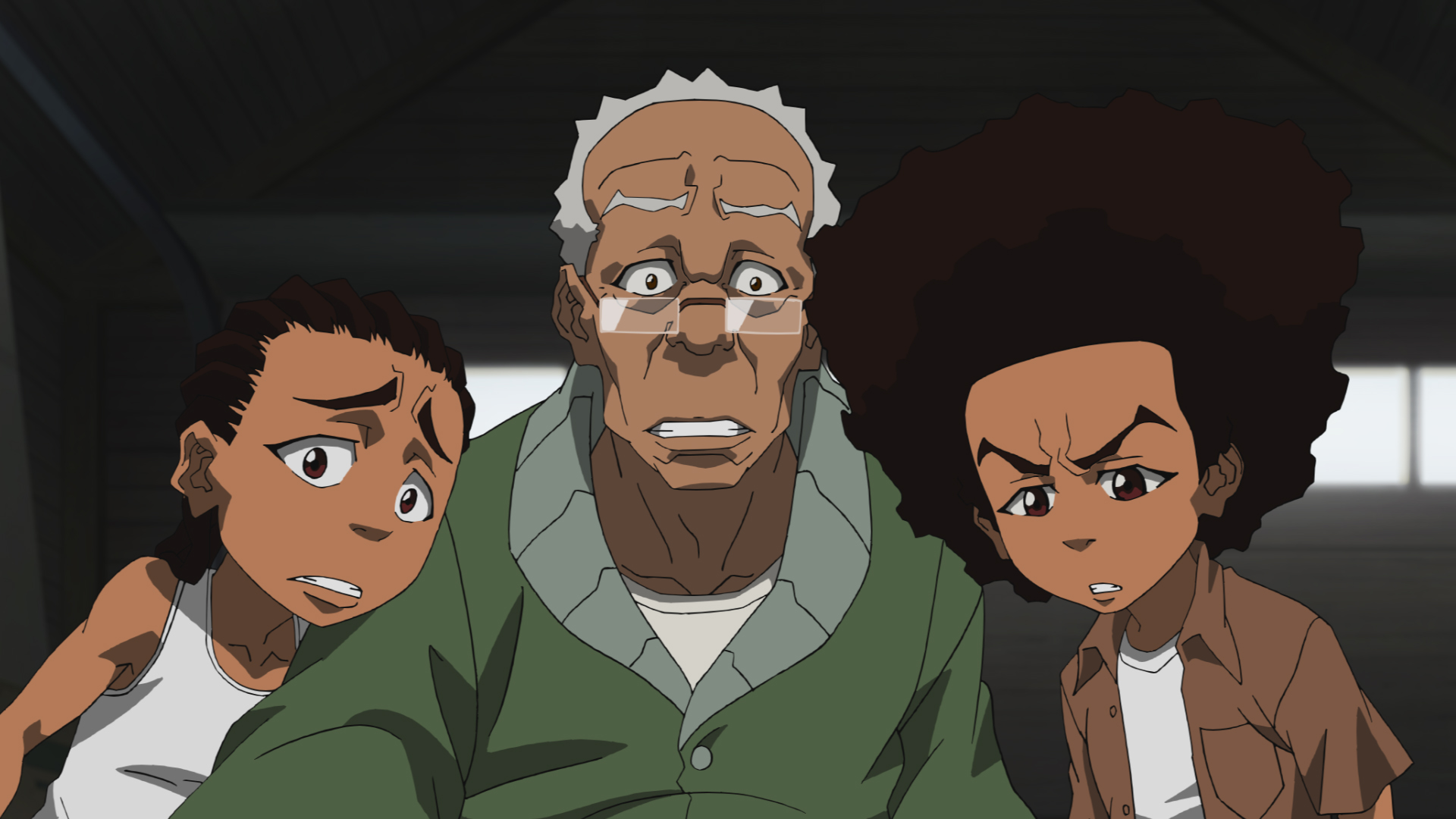Review: Mad God
Overview:
Phil Tippett, legendary stop-motion animator and director, whisks audiences away to a grim fantasy world in Mad God. A cryptic figure known only as The Assassin sets out on a bold mission of mass destruction that will forever change this dystopian prison. The Assassin’s journey is long and full of abrasive obstacles, but the events of Mad God play out like methodical clockwork. The far reaches of this toxic world are explored in an adventure like no other where these powerful figures who are hungry for change reach a deadly impasse.
Our Take:
First thing’s first: Phil Tippett is an absolute visionary genius, a fundamental name in terms of the development of stop-motion, and he’s been responsible for some of the most iconic cinematic creatures to come out of the science fiction and horror genres, from the T-1000 to RoboCop to the aliens from out of Starship Troopers and Star Wars. Tippett’s work is unparalleled and Mad God is the purest distillation of his creative ambitions and arguably the only time that he’s been given such freedom. There are visceral visuals in Mad God that contain some of the strangest worlds and most complex creatures that will be seen in any medium of this year. However, while it seems like Mad God should be a genre and stop-motion fan’s dream come true, it’s unfortunately a poorly paced experiment that’s scant in story and gets lost in its rich world, for both better and for worse.
Mad God is a moody visual tone poem that every animation and genre fans owe it to themselves to see, but it’s more of a proof of concept and a testament to Tippett’s crunchy imagination than the next animated masterpiece. If any of these creations were to show up in another movie then they’d unquestionably be up for Academy Award consideration, but as a whole and left to its own devices, Mad God is a highly niche venture that almost feels unabashedly inscrutable.
Mad God is absolutely one of a kind and feels more akin to an experimental art film than anything else. That being said, there are comparisons to be drawn with Dark Crystal and Heavy Metal, but much of this has to do with tone, ambience, and aesthetic than content. Mad God is arguably not as successful as those other endeavors, but there are moments where it gets close and it’s easy to just let go and let the visuals take you over, even if not every element works.
There’s such a crunchy, tactile feeling to every character and piece of set design that’s the opposite of what so often gets pushed in animation and these types of stories. It feels like the type of animated movie that Pixar would make if they had a studio in Mordor or if they hired their first Cenobite director. There is a sweet narrative at the core of Mad God, but it’s just hidden under so many layers of grime. Mad God is certainly guilty of getting lost in its world–in fact it outright gets stranded and dies in it–and for some people that won’t be a bad thing.
It almost feels like the audience is trapped in one of the cyclical torture devices that this world’s mad creations are forced to operate. At every moment Mad God is visually stunning, but the lack of forward momentum turns it into a surprising slog at most points. This is especially prevalent during the beginning of Mad God, which is forced to do most of the heavy lifting in terms of the lore of its universe and it’s a dense first act that’s difficult for the movie to recover from and mix up its rhythm.
The absence of a strong narrative propulsion is Mad God’s biggest weakness, but there’s still plenty more to absorb and appreciate in this project. For a movie that comes from a stop-motion savant, Mad God does not disappoint and it features a sumptuous feast of monsters and stop-motion magic. Every frame is packed with visual information and it makes sure that the set design can fill in storytelling details due to the lack of dialogue throughout the movie. A strange dichotomy is created wherein there are meticulously detailed environments that make you not want to look away from the screen, yet it’s simultaneously the perfect program to have playing on in the background on a loop. It’s the epitome of atmosphere and tone, but most audiences require a lot more than that, despite the clear technical brilliance that’s on display.
Mad God is bold and abrasive as a continuous feature film, but it explores so many compelling and eclectic ideas that it might have been a more palatable project if it was split up into shorter, digestible pieces and aired on a more avant-garde distribution channel, like Adult Swim (it’d honestly be the perfect companion piece to The Shivering Truth). Mad God will be a struggle for many to get through as a feature-length movie, but it’s easy to picture the same vehicle not only succeeding, but actively thriving if it was split up into a season of experimental television. Phil Tippett is a big enough name to warrant the cinematic treatment, but it’s curious to consider how big a difference presentation and context makes for a project of this nature .
I am completely the audience for Mad God and I was extremely excited to let this madness take me over, which makes it such a frustrating disappointment that Mad God is a collection of compelling sequences that don’t exactly coalesce into a satisfying narrative feature. It’s absolutely a good thing that Mad God exists and Phil Tippett is without a doubt someone who’s earned a canvas of this magnitude to tell his stories. Mad God is receiving a limited theatrical release and it’s a movie that truly benefits from being experienced on the big screen and it’s something that deserves to be seen even if it’s not completely successful. There’s true magic that’s on display during the moments when Mad God works. Phil Tippett slaved away on Mad God for more than three decades, but this movie is hopefully just the beginning of his personal passion projects and not his swan song.
‘Mad God’ will receive a limited theatrical release as well as stream on AMC+ on June 16
























"There are also other characters that come and go (also owned by the Warner Bros. Discovery conglomerate media company)."
Huh. Is that just referring to other characters from the show itself, or is this implying that the new season is going to have cameos from other WBD IPs